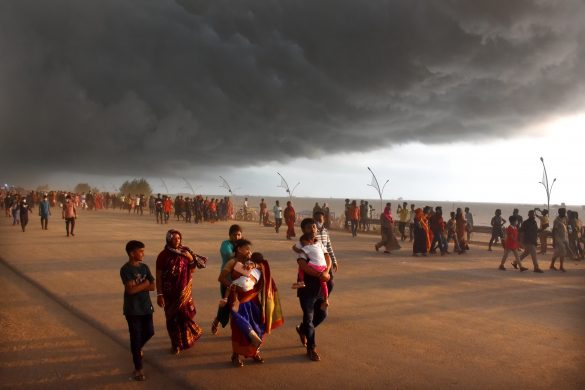Siden 2000 er befolkningen i Ulaanbaatar fordoblet og byens areal vokset med 40 procent. Men hverken infrastruktur eller bureaukratiet kan følge med og det koster byen og dens indbyggere dyrt, lyder det i rapport fra Verdensbanken.
Ulaanbaatar. (Foto: Brücke-Osteuropa, Wikimedia Commons)
ULAANBAATAR, February 10, 2015 (World Bank): Mongolia’s recent economic growth has dramatically changed Ulaanbaatar. Since 2000, Ulaanbaatar’s population has nearly doubled (til 1,4 mio. i 2013, red.) and the built up area of the city has expanded by 40 percent.
Yet, the city’s expansion has also made it among the least dense cities of its size (based on built-up land) in the region.
This low-density spatial expansion has negatively affected traffic and congestion levels and air quality, increased exposure to hazards such as fire and flooding, and reduces equitable access to public services such as schools and clinics.
All of these factors limit the quality of urban life and the economic potential of the city.
Stor plads til forbedring
A new report titled Land Administration and Management in Ulaanbaatar, Mongolia identifies key challenges to the effective functioning of urban land markets in the city.
The overall low density and the lack of a diversity of land uses limit the city’s potential for long-term economic growth and social integration.
The city also lacks the tools to capture a share of the private value that it creates through public investments in infrastructure such as schools, water, heating and sewage, as well as its role in securing property rights that support the function of private land markets in the city.
“We hope the analysis and recommendations in this new report can help Ulaanbaatar city adopt news ways to generate revenue from land-related services to fund much-needed public infrastructure projects that would benefit the poor and gher areas,” said James Anderson, the Country Manager for Mongolia.
The city is responsible for administering over 60,000 hectares of urban land and has a critical role in establishing land use regulations, land allocation procedures, development standards, and taxes and fees.
The study suggests that improvements such as increasing the transparency of allocation procedures, improving access to information about property and prices, and streamlining the process for obtaining land title certificates would provide direct benefits to both residents and the city government alike.
Byen bør blive bedre til at tjene penge
Most major cities across the world derive revenue from any number of land value capture tools such as development fees, land auctions and property taxation based on market valuation to finance infrastructure improvements.
Ulaanbaatar has yet to fully explore these options. The report finds that the city foregoes substantial revenues that could be derived from private investment in land.
Under current allocation practices, the city is not capturing its fair share of the market value of the conversion of land from public to private use, nor do current land auction practices adequately capture market values of public lands being allocated.
Nogle anbefalinger
The report suggests that initial steps could include standardizing the practice of public land auctions for non-residential use and reconsidering the valuation scheme for existing fees and taxes on land and property.
An interdepartmental task force can be set up to consolidate land records, audit municipal land holders, and create the plans and guidelines for auctioning future land public land holdings for nonresidential use.
Auctions can be an important means of generating revenue because they allow the city to obtain a more representative share of the true market value of publicly owned land that is released.
Rapporten er endnu ikke tilgængeligt online.
Læs mere om Ulaanbaatar på Wikipedia














